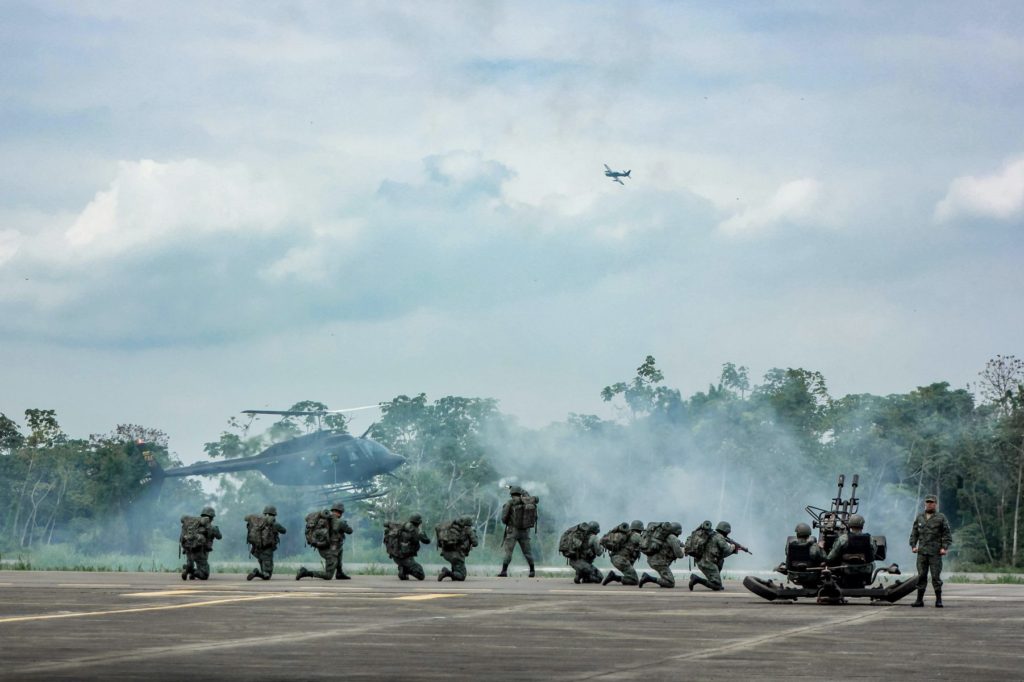By The American Contemporary
The Veteran’s Affairs office has been a formally recognized cabinet-level executive office since 1989, however its origins in providing services to soldiers and veterans date back to the American Revolution. The VA provides a wide assortment of services to soldiers, both in active duty and those who have served previously, as well as veteran families and civilians during times of emergency. The most well-known of these services tends to be healthcare via VA-owned hospital and outpatient networks, however the VA also provides non-health services such as disability payments, job placement and training, education loans and payment assistance, home loans, life insurance, and memorial/burial services. While the intentions of the VA are noble, and in some ways it succeeds in its mission to provide for the servicemen of America, it is rife with controversy, misappropriation of funds, and failures throughout its tenure.
First, it is worth looking into the state of VA healthcare, its most well-known function and its most funded operation (amounting to approximately 90% of its proposed 2024 discretionary spending allocation). VA healthcare administered in traditional medical facilities has been studied somewhat robustly over the past 20 years, however the standards by which these studies operate tend to fluctuate substantially from one study to another, meaning the definition of “success” and “quality” is not standardized and could cause confounding results. Even still, amongst several literature reviews, most studies find that patient care quality in VA hospitals is equal to or better than most conventional facilities. Most studies do note however, that quality is not consistent location to location, and non-healthcare related experiences such as claim processing often leaves a lot to be desired.
Additionally, VA healthcare has made contributions toward the field of medicine, assisting in clinical trials, offering new treatment options, and working towards the development of new treatment techniques. That being said, there are many limitations with VA healthcare, many of which appear to be growing worse over time. The backlog of claims issued by clients has grown considerably in the past twenty years, and while it did downtrend in the late twenty-tens, it has since grown considerably from 2020 onward. As of December 2023, the backlog is just shy of 400,000, which is the highest it has been since late 2013-early 2014. Total claims inventory (which includes disability benefits along with other payments) is also highly elevated, only just recently dropping below its ten-year high of about 1.1 million claims, and now sits slightly above 1 million. The 12 month average claim accuracy has also trended downward in recent years, slowly approaching 94%, and is near an all-time low. And apart from slow processing of claims, many veterans incur additional costs as accessibility, travel restrictions, and technological limitations prevent many patients from receiving continuous care.
But apart from the various successes and shortcomings of healthcare, the VA has found itself in public scrutiny again throughout recent months for a variety of causes, ranging from misuse of money to sexual harassment allegations.
One such controversy has come from the purported use of VA money and resources for the processing of illegal immigrant medical claims to aid Immigration and Customs Enforcement (ICE). The VA’s Austin, Texas-based Financial Services Center have been contracted with ICE since 2002, however the recent growth of veteran claims coupled with the surge of illegal crossings in recent years has caused considerable blowback from the public, and predominantly from conservative lawmakers. In the 2022 year, the FSC aided in processing 161,538 claims, which then were passed on to ICE who actually made the payment for medical care for non-citizens (an average of $584 per person). While it is important to note that the VA claims that no money is actually taken from the pool allocated for veterans to provide treatment, it does maintain a staff of individuals who are compensated (it claims about 10 people) for their time and efforts. Further, the VA claims that this does not impact their primary mission in any way.
While it is true that money may not be spent in excessive qualities (though the cost of space and employees does take some overhead resources), the primary concern in my opinion here is the processing efforts being misplaced. With a ballooning backlog of claims, those 100,000+ claims processed could have gone to veteran-related events. It is apparent that the VA office is falling behind, and some correction is needed, such as increasing workforces (though such a thing would further increase their overhead and reduce their total budget for veterans further), or through improvement of efficiencies.
In addition, the VA has faced several misuse accusations in recent years. One claim put forward alleges that the VA used millions of dollars during the COVID-19 pandemic which was meant for treating COVID-19 in veterans for the purchase of supplies and equipment as well as service contracts. There was little oversight and regulation of this budget, and when investigated, most officials failed to produce any answers to where the money was spent or if it was truly going to its original intended purpose.
The VA was also found to have wasted $223 million in transportation services programs. These programs were believed to have been a limited impact and overpriced, and the use of such a large sum of money for these programs resulted in delays to provider reimbursement, veterans loosing care, veterans being contacted by collections and having their credit impacted, and a loss of budgeted money which could have gone to better purposes.
And most recently as of the time of this writing, the House Committee on Veterans Affairs released a new report outlining an ongoing investigation on allegations of sexual harassment in the Department of Veterans Affairs (VA) Office of Resolution Management, Diversity, and Inclusion (ORMDI). To provide background, a whistleblower contacted the committee regarding alleged suggestive and aggressive messages from multiple VA employees, including their senior manager, ORMDI Chief of Staff Archie Davis, over the course of a year. The whistleblower goes on to state that when they refused the Chief of Staff’s advances, he began to retaliate by badmouthing the employee to other members of the leadership. Despite a near unanimous subpoena issued by the Committee, the VA has failed to turn over the requested data apart from its own internal investigation, and other members of the President’s administration have similarly failed to follow up.
This lack of effort from both the political administration and the VA’s office to hold its leaders accountable is disturbing to say the least, and further demonstrates a systemic issue at the core of these government programs. Venturing into personal opinion and analysis from a more fundamental political opinion, the VA is a wonderful idea but a horrendous execution. The ability to provide healthcare, education, and other benefits to veterans is not only a just reward for those who put their lives on the line for the country, but also serves as a useful recruitment tool. However, the excessive degree of bureaucracy coupled with the logistical nightmare of attempting to regulate an entire nation’s worth of veterans from a single office undermines any potential success that could be gained.
Further, the same systemic corruption that appears to force its way into any established system of power has also permeated the upper echelons of the VA, creating hostile work environments, poor planning and decision making, and a frequent disregard and misappropriation of budgeted funds away from the office’s core mission. The VA hospitals are often the ones to suffer for the negative publicity, despite their generally positive performance, however the slow claims coupled with increasing inaccuracies stifle progress. And with the age of social media allowing rapid dissemination of experiences and issues, new generations are being exposed to these shortcomings and are finding the benefits to not outweigh the costs, contributing to military recruitment shortages.
From my perspective, the VA’s office must work on improving efficiencies, removing overhead and bureaucracy where possible to re-balance the budget. Improved reporting and transparency of the budget would also help ease the mind of veterans who depend on these services. Finally, the military in conjunction with congress and the VA’s office should reconsider the benefits it offers. Finding new opportunities to give back to veterans, and providing new ways to take advantage of seldom used programs would not only help elevate the lives of veterans today, but would also create incentives for the veterans of tomorrow.

